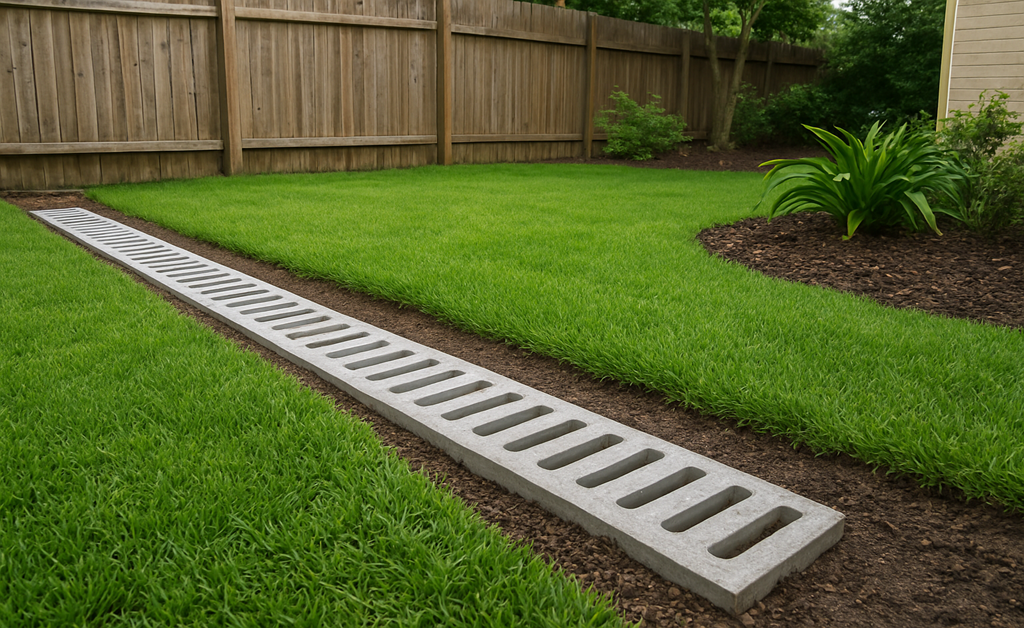Water damage can be among the most expensive issues property owners encounter. From a damp basement to a flooded foundation or standing water near the property, knowing drainage solutions can help protect your investment. Drainage tiles are a simple and efficient method of diverting excess water from the property and preventing damage and damp conditions.
This guide from Bill’s Custom Concrete takes you through the workings of drainage tiles and why they could be the answer your land needs.
How Do Drainage Tiles Actually Work?
How do drainage tiles work? If you’ve ever wondered, the answer is in their design: Drainage tiles are perforated pipes buried in the ground in order to gather and direct excess groundwater. In spite of the nomenclature, modern drainage tiles are normally manufactured from PVC or other hard plastic material instead of customary clay tiles.
The Basic Procedure
The system functions with a simple process. Water automatically moves towards the lowest point, and drainage tiles are designed in such a way that they capture this water prior to its reaching your basement or foundation. The pipes are perforated and let in the groundwater from the earth, which then moves through the system and is carried off into a point of discharge.
Installation and Orientation
Drainage tiles are installed in trenches dug outside the footing of your foundation or in areas where the water accumulates. Gravel covers the pipes and does two things: it provides the water with an access route to the drainage tiles and prevents soil from clogging the openings.
This system depends entirely on gravity in order to transport the water from the collection point to the area where the water discharges. The discharge area is often a dry well, a storm drain, or some area in your property where the water can safely drain without property damage.
Major Elements
An effective drainage tile system comprises some basic components. The perforated pipe is the essential component in the system, and the gravel bed allows for effective flow and filtration of the effluent. Filter fabric normally covers the gravel such that no finer material enters the system and clogs the system.
The Role of French Drains and Other Remedies
One of the most widespread implementations of drainage tile technology is the usage of French drains in OKC. These drainage systems are most beneficial for the houses with damp basement issues or lawns with flood conditions.
When You Need Drainage Tiles Most
Drainage tile installation is common among property owners whose properties experience persistent drainage issues. You are likely in need of drainage tile installation if you experience such issues as water in your basement after a rainy day, damp spots in your yard that take too long to evaporate, or settling in the basement that can be caused by water-laden soil.
Comparing Different Drainage Solutions
Even though drainage tiles are extremely efficient, they are quite far from being the only solution available. The surface drainage systems such as gutters and correct grading take care of the water at the surface, but no such systems are available for the groundwater which drainage tiles target in specific.
Sump pumps also work well with drainage tiles, especially in high-water-table sites. The drainage tile collects the water, and the sump pump also provides added protection by actually pumping the water off beneath your footings.
Long-Term Asset Protection
It helps to understand not just what the system does, but how does tile drainage work for you? Investing in the correct drainage protects more than the basement. Excess moisture can cause damage to the foundation, mold, and damage to the yard. You’re building a whole water control system when installing drainage tiles, which protects the structural integrity and value of the property.
Get Customized Expectations Today
Every property has its own unique drainage issues based on the makeup of the soil, local conditions, and existing infrastructure. Drain tiles can be a great answer to many drainage problems, but determining the right approach in your situation requires the professional analysis.
Consider consulting with our friendly team at Bill’s who can evaluate your property’s needs and recommend the most effective solution. We can assess factors like soil permeability, water table levels, and existing drainage infrastructure to design a system that provides long-term protection for your investment.
Don’t let water damage turn into an expensive issue. Take the right precautions in treating the area with water, and the money you spend now will be worth it in the long run!

